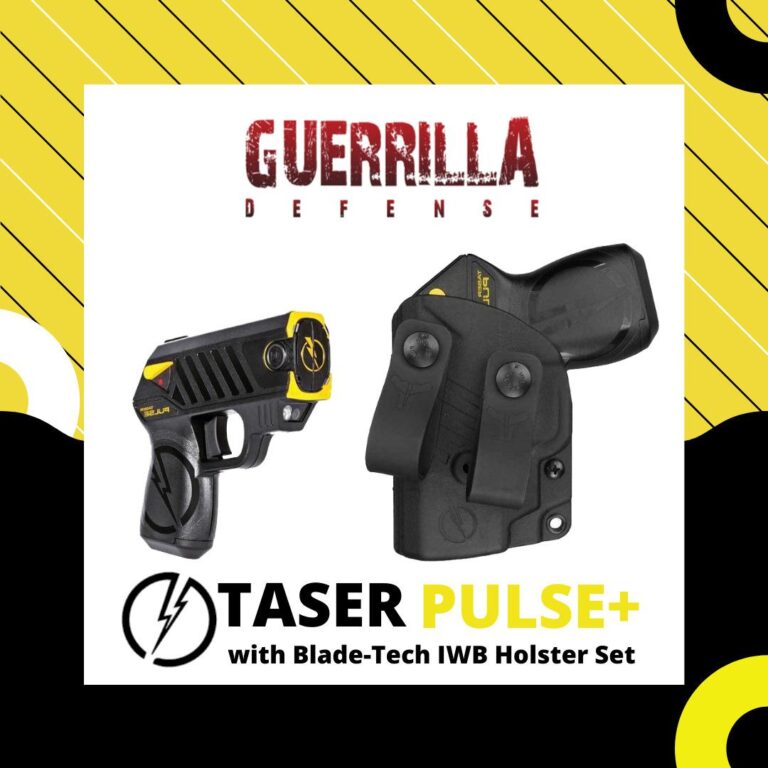Table of Contents
- The Science Behind Pulse Frequency and Its Impact on Neuromuscular Disruption
- Optimizing Pulse Frequency for Maximum Stun Gun Performance
- Balancing Power and Safety Through Pulse Frequency Adjustments
- Practical Tips for Selecting Stun Guns Based on Pulse Frequency Characteristics
- The Conclusion
The Science Behind Pulse Frequency and Its Impact on Neuromuscular Disruption
At the core of a stun gun’s functionality lies the principle of neuromuscular disruption, which is heavily influenced by the device’s pulse frequency. When an electric pulse is delivered, it interferes with the electrical signals that the nervous system uses to communicate with muscles. Higher pulse frequencies generate rapid bursts of electrical stimuli, overwhelming the body’s natural signaling pathways and causing temporary muscle incapacitation. Conversely, lower frequencies produce longer intervals between pulses, which may not be sufficient to induce a full neuromuscular lockup. This delicate balance ensures that stun guns are both effective and safe when correctly calibrated.
Several factors determine the optimal pulse frequency for stun guns:
- Muscle fiber recruitment: Higher frequencies increase the likelihood of engaging a wider range of muscle fibers, intensifying the disabling effect.
- Nerve response time: Pulses must arrive quickly enough to disrupt ongoing nerve impulses without allowing recovery periods.
- Energy efficiency: Managing pulse frequency affects battery life and device reliability during critical use.
Optimizing Pulse Frequency for Maximum Stun Gun Performance
Achieving optimal stun gun performance hinges on carefully calibrated pulse frequencies. The frequency determines how fast electrical pulses are delivered, directly impacting muscle contraction efficacy and the overall incapacitation effect. Higher frequencies can induce rapid muscle spasms, overwhelming the target’s nervous system, but they also draw more battery power, potentially reducing the device’s usable duration. Conversely, lower frequencies conserve battery life but may result in less immediate or effective muscular disruption.
Several factors must be balanced to optimize pulse frequency, including:
- Target Physiology: Different body types and clothing materials affect electrical conduction.
- Device Battery Efficiency: Ensuring pulse frequency matches power availability for sustained operation.
- Legal and Safety Guidelines: Adhering to regulated frequency limits to prevent excessive harm.
By tailoring pulse frequency to these considerations, stun guns deliver maximum disruption with minimal energy waste, enhancing both reliability and user safety.
Balancing Power and Safety Through Pulse Frequency Adjustments
Adjusting the pulse frequency in a stun gun is a delicate dance between delivering enough power to incapacitate an assailant and maintaining the user’s safety. A higher pulse frequency can result in a more intense electrical shock, increasing the likelihood of temporary immobilization. However, this intensity can also raise the risk of unintended injury or excessive strain on the device’s internal components. By fine-tuning the pulse frequency, manufacturers strike a crucial balance, ensuring the stun gun remains both effective and reliable without compromising safety.
Key factors influenced by pulse frequency adjustments include:
- Voltage Consistency: Higher frequencies can stabilize voltage output for predictable performance.
- Battery Efficiency: Lower frequencies extend battery life, reducing the need for frequent recharging.
- Heat Management: Regulating pulses prevents overheating, which protects internal circuitry.
- Physiological Impact: Optimal frequencies maximize nerve disruption while minimizing long-term health risks.
Practical Tips for Selecting Stun Guns Based on Pulse Frequency Characteristics
When evaluating stun guns, it’s essential to focus on the pulse frequency as a key determining factor for their operational efficiency. A higher pulse frequency tends to deliver more consistent electrical shocks, which enhances the disruption of the target’s nervous system. However, this does not mean that the highest frequency is always the best choice. Certain scenarios may benefit from a moderate pulse rate, offering balanced effectiveness while conserving battery life and minimizing risks of overexposure. Keep in mind that frequency variations affect the duration and intensity of electric discharges, so selecting a stun gun with adjustable pulse frequency settings can provide adaptability across different self-defense situations.
To make an informed decision, consider the following practical points:
- Purpose of use: High-frequency stun guns are ideal for rapid incapacitation, while lower frequencies might be sufficient for deterrence without prolonged contact.
- Battery efficiency: Devices with lower pulse rates typically consume less power, ensuring longer standby and active use times.
- Legal restrictions: Some regions limit the maximum pulse frequency allowable in civilian stun guns, so verify compliance before purchasing.
- Personal comfort: Experimenting with different pulse settings can help you find the optimal balance between shock effectiveness and control.
The Conclusion
In the realm of personal security, understanding the technical nuances of stun guns can make a significant difference in choosing the right device. Pulse frequency is more than just a specification-it’s a key factor that influences the effectiveness and reliability of a stun gun when it matters most. By paying close attention to this often-overlooked detail, users can ensure they’re equipped with a tool that delivers optimal performance and peace of mind. Whether for self-defense professionals or everyday users, appreciating how pulse frequency impacts stun gun functionality empowers smarter, safer decisions in protecting oneself and loved ones.Check Our Other Blogs
- StunGun – Your Trusted Source for Stun Guns, Laws, and Self-Defense Tips
- PepperSprayLaws – Your Trusted Resource for Pepper Spray Information
- StunGunLaws – Your Trusted Guide to Stun Gun Legality and Safety





